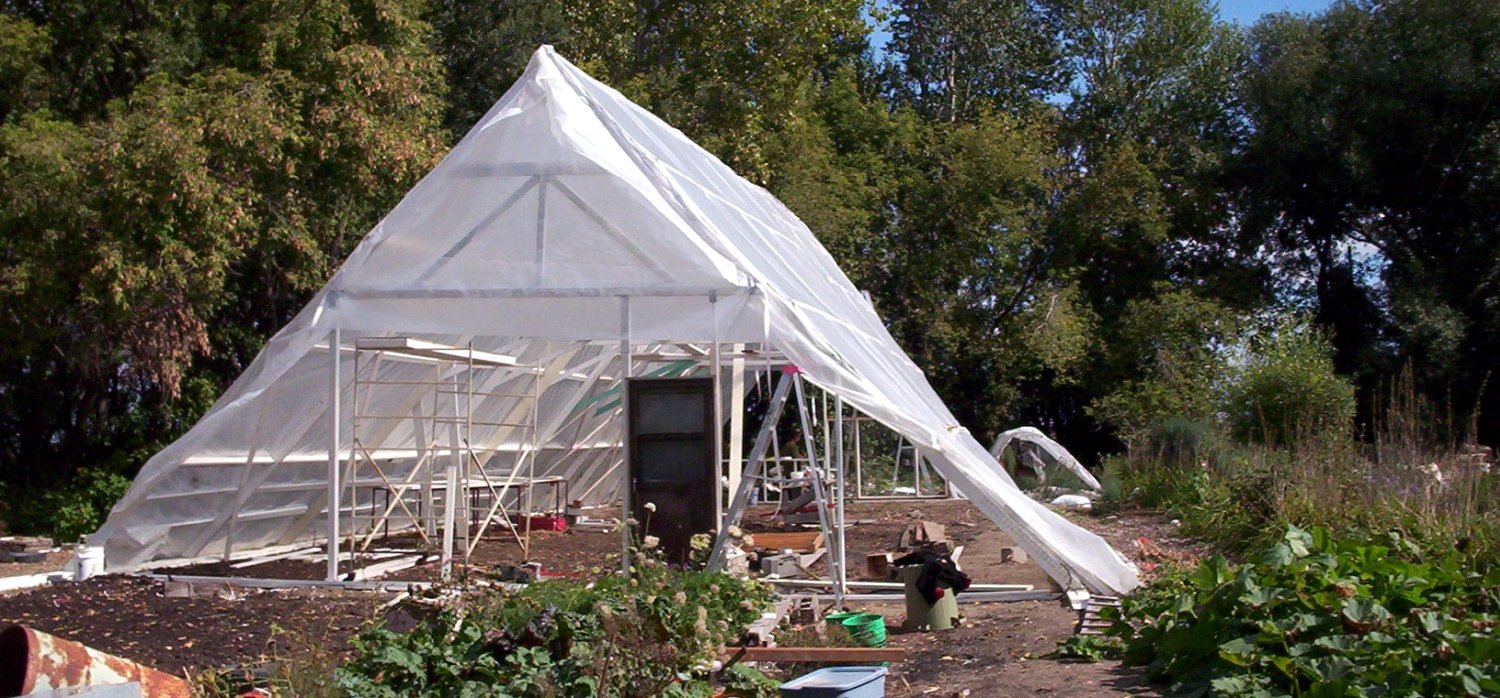installation & fastening
Fastening Poly to Rafters
Poly must never be attached with bare staples or nails. Some sort of strip must be used to spread the stress of the attachment point. Here are three appropriate choices.
Cinchstrap
If you want something smoother and more attractive than wooden lath, try our Cinchstrap. Cinchstrap is plastic lath: an attractive white high-density ultraviolet stabilized polyethylene strip. The white reflects the heat, keeping the poly on the rafters cooler. Being smooth it does not abrade the poly in strong winds. It bends easily around curves and corners, unlike wood lath. It's flexible, tough and durable. But it can be cut with sharp scissors. It's almost 2" wide. It's simple and fast to apply. Some nail it down on each stud so that the poly rests on the smooth surface of the strap. This helps prevent abrasion. Then nailed on top of the poly. You can use those big headed roofings or shingle nails. This strapping can also be used thrown over the poly side to reduce poly flapping.
Polyfastener
Polyfastener is a smooth white 2-piece system for clamping the poly to the frame without making holes in the poly. It is used on the outside/perimeter rafters and base. It is especially used on steel-arched greenhouses, where you can't nail down the poly on every rafter. With Polyfastener poly can be installed on a cold day and when it gets hot you can easily remove the insert strip in the Polyfastener and re-tighten the poly. This can be done repeatedly without any puncturing of the poly, since it is clamped rather than nailed.
Wooden Lath
Wood lath is harder on poly. These are strips of wood perhaps 1/4" thick by 1 & 1/2" wide. Sometimes you can get lath free from lumberyards where it's often used as spacers between lumber, some of my customers do that. You can sand them smooth to lessen abrasion and lengthen poly life. Or use white carpet. Poly disintegrates first beneath the wooden lath.
Optional: To reduce abrasions, insert a strip of poly between the woven poly and lath. The smoother and whiter the surface of the rafter, the better it is for the poly to reduce heat, so sand and paint if using wood.
[an error occurred while processing this directive] [an error occurred while processing this directive]